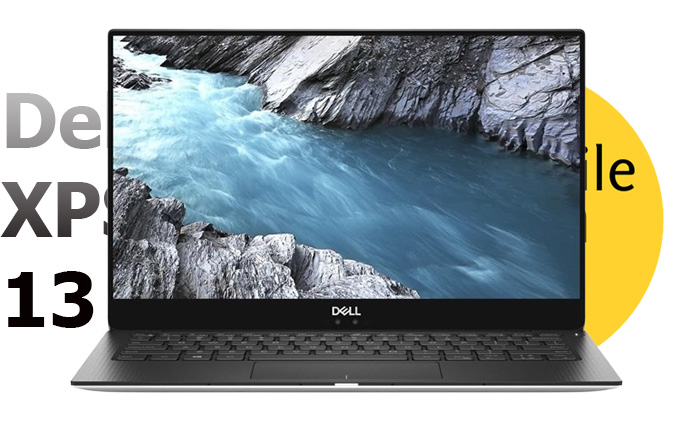As a tech enthusiast and longtime follower of Dell’s XPS lineup, I was excited to get my hands on the latest Dell XPS 13 (9345). This ultrabook marks a significant shift for the series, as it’s one of the first to feature Qualcomm’s new Snapdragon X Elite processor. I spent over a week putting this sleek machine through its paces, eager to see if it could live up to the XPS legacy while embracing ARM-based architecture.

What I discovered was a mix of impressive features and unfortunate compromises that left me with mixed feelings about this Snapdragon-powered ultrabook.
Key Takeaways:
| Pros | Cons |
| Sleek, lightweight design | Limited port selection |
| Excellent battery life | Performance lags behind Intel/AMD competitors |
| Gorgeous display options | Cramped keyboard layout |
| Impressive speakers | Inconsistent x86 app performance |
| AI-enhanced features | High starting price |
Dell XPS 13 (9345) Review: A Familiar Face with Some Compromises
When I first unboxed the Dell XPS 13 (9345), I was immediately struck by its gorgeous design. The laptop maintains the series’ reputation for premium build quality, featuring a CNC-machined aluminum chassis that feels incredibly solid in hand. At just 2.7 pounds (1.18 kg) and 14.8mm thick, it’s one of the most portable 13-inch laptops I’ve ever used.
The matte Graphite finish on my review unit looked stunning and did an admirable job of resisting fingerprints. Dell also offers a Platinum color option for those who prefer a lighter aesthetic. The minimal branding – just a small Dell logo on the lid and an XPS logo on the bottom – contributes to the overall sleek appearance.
However, this pursuit of thinness comes at a cost. The XPS 13 (9345) features only two USB-C ports – one on each side. While these are USB4 ports with DisplayPort and Power Delivery capabilities, the lack of additional connectivity options is disappointing. I found myself constantly reaching for dongles and adapters during my testing period.
Display: A Visual Feast with Some Caveats
My review unit came equipped with the high-end 3K Tandem OLED touch display, and it’s undoubtedly one of the laptop’s standout features. The colors are vibrant, blacks are deep, and HDR content looks fantastic. With 400 nits of brightness, it was more than adequate for indoor use, though I did find myself wishing for a bit more punch in brightly lit environments.
The anti-reflective coating works well to minimize glare, and the Corning Gorilla Glass Victus provides peace of mind regarding durability. However, I did notice some significant shifts in color and perceived contrast when viewing the display at off-angles – something to keep in mind if you frequently share your screen with others.
It’s worth noting that Dell also offers a more affordable Full HD+ IPS panel option, which boasts a higher 120Hz refresh rate compared to the OLED’s 60Hz. While I didn’t test this configuration, it might be a better choice for users prioritizing smooth scrolling over color accuracy.
Keyboard and Touchpad: Form Over Function
The XPS 13’s keyboard and touchpad are areas where I felt the pursuit of aesthetics somewhat hampered usability. The keyboard itself offers a decent typing experience with good key travel and feedback. However, the compact layout led to more typing errors than I’m used to, especially when reaching for keys near the edges.
The capacitive touch function row looks sleek but proved frustrating in practice. The lack of tactile feedback made it easy to accidentally trigger functions, and I missed having physical keys for essential shortcuts. Additionally, these touch keys don’t function when the laptop is in sleep mode, which can be inconvenient.
The invisible glass touchpad is a visual marvel, seamlessly blending into the palm rest. While it offers smooth tracking and good palm rejection, I found its undefined boundaries led to occasional misclicks and difficulty with precise cursor control.
Performance: Snapdragon’s Growing Pains
The heart of this XPS 13 is the Qualcomm Snapdragon X Elite X1E-80-100 processor, paired with integrated Adreno graphics. This marks a significant departure from the Intel chips typically found in the XPS line, and the results are mixed.
For everyday tasks like web browsing, document editing, and light photo editing, the XPS 13 (9345) performed admirably. The system felt snappy and responsive, with quick app launches and smooth multitasking. However, when pushing the system harder, I noticed some limitations:
- Inconsistent x86 app performance: While many programs ran well through emulation, I experienced occasional hitches and slowdowns, particularly with more demanding software.
- Graphics performance: The integrated Adreno GPU struggled with anything beyond basic gaming or 3D tasks.
- Benchmark results: In synthetic tests, the XPS 13 (9345) often fell behind similarly priced Intel and AMD-powered ultrabooks.
Here’s a quick look at some benchmark results:
| Benchmark | Score |
| Geekbench 6 Single Core | 2,795 |
| Geekbench 6 Multi Core | 14,478 |
| Cinebench 2024 Single | 121 |
| Cinebench 2024 Multi | 997 |
| 3DMark Night Raid | 25,732 |
While these numbers aren’t bad, they don’t quite justify the XPS 13’s premium price tag when compared to the competition.
Battery Life and Charging: A True All-Day Performer
One area where the Snapdragon processor truly shines is battery life. The XPS 13 (9345) consistently lasted through full workdays with juice to spare. In my video playback test, it managed an impressive 16 hours of runtime – though it’s worth noting this falls short of Dell’s ambitious 35-hour claim for the Full HD+ model.
The included 60W charger topped up the battery quickly, getting me from 10% to 50% in about 30 minutes. This fast-charging capability is a welcome feature for those times when you need a quick boost before heading out.
Audio and Webcam: Punching Above Its Weight
I was pleasantly surprised by the XPS 13’s quad-speaker setup. The two 2W woofers and two 2W tweeters delivered clear, full-bodied sound with decent bass response – impressive for such a thin laptop. While they won’t replace dedicated external speakers, they’re more than adequate for casual media consumption and video calls.
The 1080p webcam is a step up from previous XPS models, offering improved low-light performance and support for Windows Studio effects. While it’s not the best laptop camera I’ve used, it’s perfectly serviceable for video conferencing. The inclusion of infrared sensors for Windows Hello facial recognition is a welcome touch, working quickly and reliably even in dimly lit rooms.
Software and AI Features: A Glimpse of the Future
Running Windows 11 Home out of the box, the XPS 13 (9345) comes with several AI-enhanced features that leverage the Snapdragon chip’s neural processing capabilities:
- Copilot+: An AI assistant accessible via a dedicated key
- Cocreator: AI-powered image generation integrated into Microsoft Paint
- Windows Studio effects: Background blur, noise cancellation, and auto-framing for video calls
While these features show promise, their current implementation feels somewhat limited. I’m curious to see how they evolve with future updates.
The preinstalled MyDell app provides easy access to system settings and power modes, which I found useful for quickly adjusting performance profiles.
Who Should Buy the Dell XPS 13 (9345)?
After spending considerable time with this Snapdragon-powered XPS 13, I believe it’s best suited for:
- Users prioritizing portability and battery life over raw performance
- Those who primarily use web-based applications and light productivity software
- Early adopters interested in exploring ARM-based Windows machines
- Consumers who value premium design and are willing to accept some compromises
Conclusion: A Promising but Imperfect Evolution
The Dell XPS 13 (9345) represents an interesting step forward for the ultrabook market, showcasing the potential of ARM-based processors in Windows laptops. Its stunning design, excellent display, and impressive battery life are undeniable strengths. However, the combination of performance limitations, a cramped keyboard, and a high starting price make it difficult to wholeheartedly recommend over competing Intel or AMD-powered options.
As someone who has long admired the XPS line, I found myself wanting more from this Snapdragon iteration. While it excels in certain areas, the overall package left me feeling that Dell hasn’t quite nailed the balance between innovation and practical usability. For now, potential buyers should carefully consider their needs and usage patterns before taking the plunge into the ARM-powered ultrabook world.
Also Check:
- RUNOLIM Hybrid Active Noise Cancelling Headphones: After testing them out, I’m convinced these are…
- The Skullcandy Crusher Evo Headphones are Here, and I Think They’re the Best Skullcandy’s…
- Pixel Watch 3: Why the Pixel Watch 3 Should Be Your Next Smartwatch?
- The Lenovo Tab M11 Stands Out in the Tablet Market: 5 Reasons why
- Meet the iPhone 16 Series: What’s New on the iPhone 16, 16 Plus, 16…
